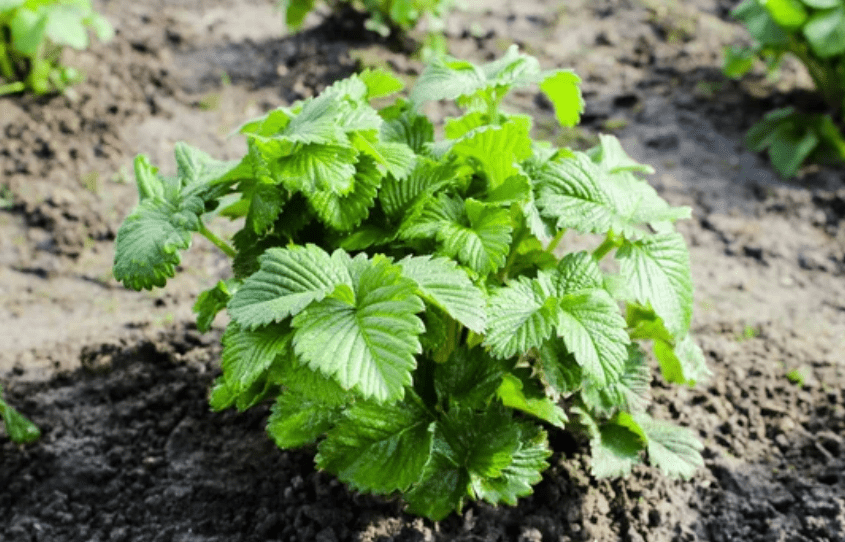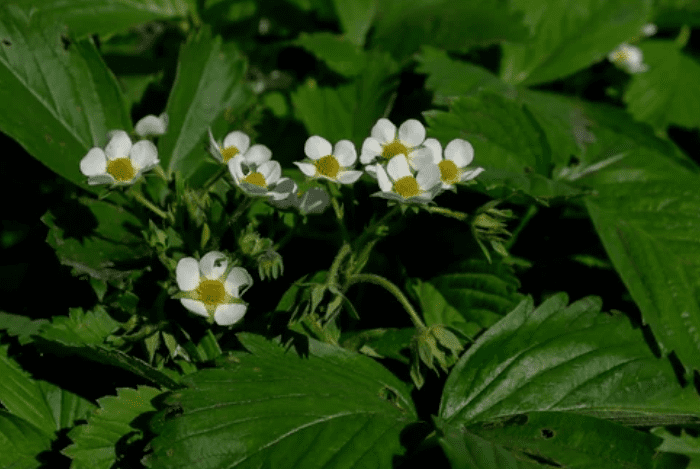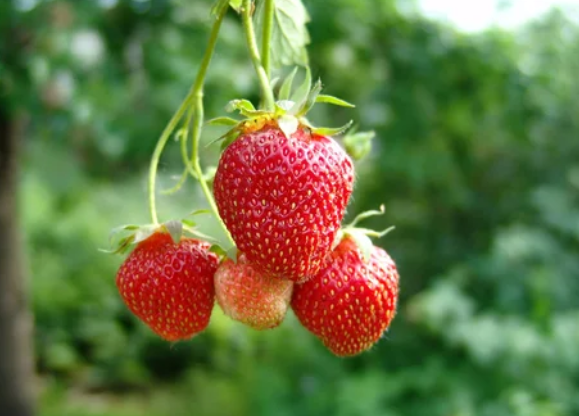
How do you care for strawberry bushes?
To care for strawberry bushes, clean them regularly, keeping the soil moist but not waterlogged. Mulch around the plants to suppress weeds and maintain moisture. Prune off any dead or damaged leaves and runners. Fertilize with a balanced fertilizer in early spring and again after fruiting.
Strawberry bushes, often called Euonymus americanus, are enchanting ornamental shrubs cherished for their vibrant red berries and picturesque foliage. With the ability to add an exceptional aesthetic appeal to gardens, these shrubs are a staple for novice and veteran gardeners.
We have compiled this quick guide to help you grow the healthiest and most radiant strawberry bushes.
Understanding the Strawberry Bushes
Before we delve into the care and maintenance, it’s imperative to understand the plant’s features.
- Origin: Native to the southeastern United States.
- Size: They can grow between 4-6 feet tall.
- Leaves: Green leaves that turn purplish-red in the fall.
- Berries: Radiant red, capsule-like berries that burst open in autumn to reveal bright orange seeds.
Optimal Conditions for Growth
Soil Preference: Strawberry bushes aren’t too fussy about their soil but thrive best in:
- Well-draining soil
- Slightly acidic to neutral pH (6.0-7.5)
- Light Requirements
Ensure that your plant gets:
- Full sun to partial shade. However, a bit of afternoon shade can be beneficial in hotter regions.
- Watering Needs
- Regular watering, especially during dry spells. The soil should remain moist but not soggy.
Planting and Care Tips
- Planting Procedure
- Spacing: Strawberry bushes require space. Ensure spacing is about 3-4 feet apart.
- Depth: Plant them as deep as the root ball, ensuring the top is level with the ground surface.
- Mulching
- Apply a 2-3 inch layer of organic mulch around the base. This helps retain moisture and suppress weeds.
- Fertilizing
- Use a balanced, slow-release fertilizer in the early spring to encourage growth and berry production.
- Pruning
- Strawberry bushes are low maintenance. However, occasional trimming to shape the plant and remove dead or diseased branches can be beneficial.

Potential Issues and Solutions
1. Pest
Some of the most common pests that attack strawberries are aphids, spider mites, slugs, snails, and birds. These pests can feed on the strawberry plants’ leaves, stems, flowers, or fruits, causing them to wilt, deform, rot, or lose flavor.
To prevent or control these pests, strawberry growers must adopt integrated pest management (IPM) strategies that combine cultural, biological, and chemical methods.
Covering ripening berries with a net that protects the fruit without harming the birds is always a good idea. You can find bird netting at stores that sell garden supplies. Infected strawberries have a distinctively unpleasant odor and a strong, bitter taste. Infection of a few ripe berries processed into jam can ruin the whole jar with this off-taste.
Some of the IPM practices include:
- Choosing resistant varieties of strawberries that can tolerate or resist pest attacks.
- Planting strawberries in well-drained soil with adequate organic matter and mulching to reduce weed growth and moisture loss.
- Rotating strawberries with other crops that do not host the same pests or diseases.
- Monitoring the strawberry fields regularly for signs of pest infestation and damage.
- Using natural enemies such as ladybugs, lacewings, predatory mites, and parasitic wasps to control aphids and spider mites.
- Hand-picking or trapping slugs, snails, and birds using baits, barriers, or nets.
- Applying insecticidal soap, horticultural oil, or neem oil to control soft-bodied pests such as aphids and spider mites.
- Applying synthetic pesticides only as a last resort and following the label instructions carefully to avoid harming beneficial insects, pollinators, or the environment.
2. Scale insects
Scale insects are tiny, sap-sucking pests that can infest various plants, including strawberries. They are often found on the stems, leaves, or fruits of the plants, and they can cause damage by reducing the plant’s vigor, transmitting diseases, or producing honeydew that attracts other pests.
Scale insects can be hard to control, as they have a protective waxy covering that shields them from most insecticides.
However, some steps can be taken to prevent and manage scale infestations on strawberries.
The first step is to monitor the plants regularly for signs of scale insects, such as white, brown, or black bumps on the plant parts, sticky honeydew on the leaves or fruits, or sooty mold growing on the honeydew.
If scale insects are detected, the second step is to prune and dispose of any heavily infested plant parts and wash off any remaining scales with a strong jet of water or a soft brush. The third step is to apply a horticultural oil or soap spray to the plants, covering all stems, leaves, and fruit surfaces.
These products can suffocate or dissolve the scales without harming the plants or beneficial insects. The fourth step is introducing natural enemies of scale insects, such as ladybugs, lacewings, or parasitic wasps, to the strawberry patch. These predators can help reduce the scale population by feeding on them or laying eggs inside them.
The fifth step is to avoid over-fertilizing or over-watering the plants, as this can make them more susceptible to scale attacks. These steps allow strawberry growers to protect their plants from scale insects and enjoy healthy and delicious fruits.
3. Diseases
Some of the most common diseases affecting strawberries are:
- Botrytis rot (gray mold): This is caused by the fungus Botrytis cinerea, which infects the flowers and fruits of strawberries. It causes brown spots on the petals, misshapen fruits, and gray fuzzy growth on the berries. It thrives in humid and wet conditions. To prevent it, remove infected plant parts, use plastic mulch, space plants well, and avoid overhead watering. A fungicide containing mancozeb can also help control it.
- Angular leaf spot: This bacterial disease caused by Xanthomonas fragariae affects strawberries’ leaves and sepals. It causes water-soaked spots with straight edges on the leaves, which may ooze and dry into crusts. It also causes brown spots on the sepals, reducing fruit quality. It spreads by rain, irrigation, and contaminated tools. To prevent it, use disease-free plants, rotate crops, avoid wetting the leaves, and apply copper-based bactericides.
- Charcoal rot: This is a fungal disease caused by Macrophomina phaseolina, which infects the roots and crowns of strawberries. It causes wilting, stunting, yellowing, and browning of the leaves, as well as dark lesions on the roots and crowns. It can also cause fruit rot and mummification of berries. It survives in soil and plant debris and favors high temperatures and drought stress. To prevent it, use resistant varieties, improve soil drainage, avoid over-fertilization, and apply fungicides.
4. Powdery mildew
Powdery mildew is a fungal disease that affects strawberries and other plants. It causes white, fine patches on the infected plants’ leaves, stems, flowers, and fruits. Powdery mildew reduces the quality and yield of the strawberries and can also make them more susceptible to other diseases and pests.
Powdery mildew thrives in humid and warm conditions, especially when the soil has poor air circulation and high nitrogen levels. To prevent and control powdery mildew, growers should use resistant varieties, avoid overhead irrigation, prune and space the plants properly, apply organic or synthetic fungicides, and remove infected plant debris.
Landscape Uses
- These shrubs are perfect as borders or in woodland gardens.
- They can also act as focal points due to their eye-catching berries.

Conclusion
Strawberry bushes, often associated with the delicate blossoms and vibrant green stems of late summer, are a pivotal gardening component for many enthusiasts. By September, these deciduous plants are transitioning, preparing for the colder months, with buds promising spring flowers starting to hint at their impending bloom.
October often sees the onset of frost, nudging them closer to dormancy. It’s recommended to integrate compost into their soil for the best results, ensuring nutrients are aplenty. This addition assists in the blossoming process and supports the pollination vital for the diverse types of strawberries, including the popular June-bearing varieties.
While many might mistake the term “strawberry bush” for the fruit-bearing plant, it’s interesting to note that the wahoo is a strawberry bush known for its distinct characteristics. Both, however, require specific care, such as hours of sunlight; while strawberries thrive in full sun, the wahoo strawberry bush can manage in full shade. Unlike evergreen plants, strawberry bushes lose their leaves, making a stark contrast against the snow.
Songbirds, small mammals, and even specific deer populations cherish strawberry bushes as a food source, especially in regions where other foods are scarce. Seeing these bushes in full bloom is a treat, and as a bonus, daughter plants sprout around the main bush, enhancing the garden’s lushness.
While strawberries are a marker of early summer and are favored by many for their sweet fruit, the strawberry bush stands as a symbol of resilience, surviving winter’s chill and greeting us with beautiful spring flowers.






















